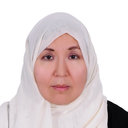Familial hypomagnesemia with hypercalciuria and nephrocalcinosis.
Ключавыя словы
Рэферат
Familial hypomagnesemia with hypercalciuria and nephrocalcinosis (FHHNC) is a rare autosomal recessive tubular disorder that is frequently associated with progressive renal failure. The primary defect is related to impaired tubular reabsorption of magnesium (Mg) and calcium (Ca) in the thick ascending limb of Henle's loop. We have studied seven Arab patients with this syndrome who belong to four different families. The mean age at first presentation was 1.5+/-1.3 years (range 0.1-3 years) and at diagnosis 5.9+/-4.3 years (range 0.5-12 years). The presenting features were convulsions and carpopedal spasms (5 patients), polydipsia and polyuria (2 patients), rickets (2 patients), and recurrent urinary tract infections (1 patient). Bilateral nephrocalcinosis was observed in all patients. All patients had hypomagnesemia with a mean serum Mg of 0.45+/-0.09 mmol/l, an inappropriately high urine Mg of 2.07+/-0.73 mmol/24 h or fractional excretion of 15.3+/-7.1%, high urine Ca excretion of 4.1+/-1.2 mmol/24 h or urine Ca to creatinine ratio of 2.6+/-1.6, and normal serum potassium level of 4.4+/-0.34 mmol/l. All patients received Mg supplements and thiazide but exhibited slow worsening of their kidney function. After a mean follow-up of 4.4+/-3.9 years, one patient progressed to end-stage renal failure (ESRF). In conclusion, we report seven Arab patients with FHHNC syndrome. The clinical and biochemical data were similar to previous reports. However, they tend to show a slower rate of progression to ESRF.


